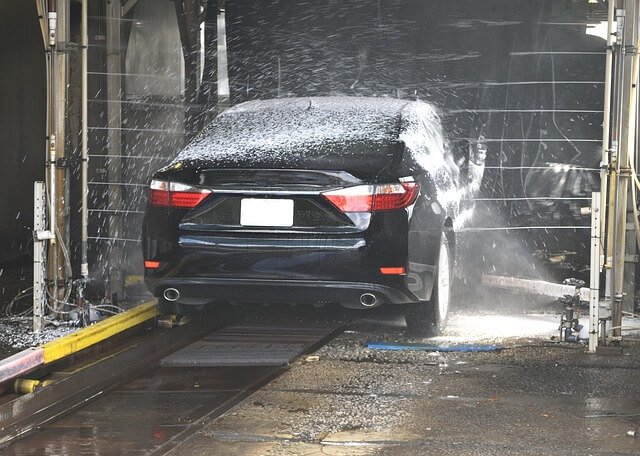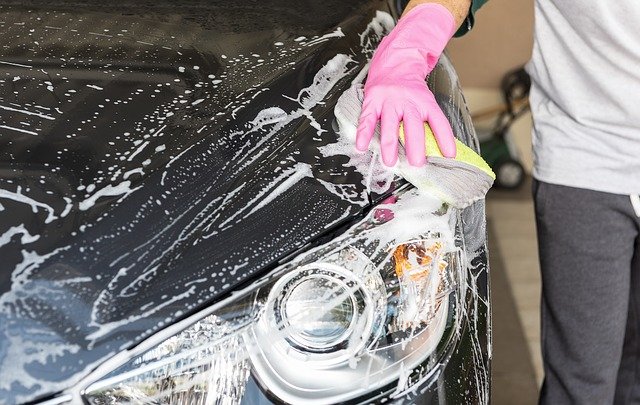What happens if you never wax your car?
Waxing may be a thing of the past for today’s busy people, but the explanation for its success hasn’t: cars take a beating on the track. Wax provides an extra layer of protection against harsh weather, salt, bird droppings, tree sap, ultraviolet rays, vehicular and industrial emissions, and other assorted crud contained in the air and on highways, in addition to giving your car a good shine.
Wax serves as a buffer between your car’s paint and toxic environmental elements. Such substances can eat away an exposed finish, causing it to deteriorate. When you don’t wax your car on a regular basis, these corrosive chemicals have a greater chance of scratching the clear coat and revealing the paint underneath. You will gradually over the months find it more difficult to clean the car.
If you’re still not sold on the idea of waxing your car regularly, check out the benefits of this habit, as well as the consequences of not waxing your car.

Benefits You Are Missing Out By Not Waxing Your Cars
Unfortunately, many of these people who work hard to keep their car’s paint in good shape forget waxing, which has numerous advantages over washing.
Waxing the car is a vital aspect of preserving its cleanliness and should not be ignored. Continue reading to learn more!
Paint Is Not Protected Against Scratches
Car wax is a combination of carnauba wax, natural oils, beeswax, and other petroleum distillates. Car wax covers the transparent coat of paint on top of the body by offering a thin layer of insulation. The scrubbing motion used to wash the vehicle, whether by hand or at a car wash, grind tiny dirt particles into the body and may leave scratches. Wax layers on the car cause dirt to slip off the body rather than grinding into the paint.
All of these problems will damage your car’s paint, which means you’ll have to repaint it to keep it looking fresh. This is particularly important if you plan to sell it soon. So, if you want to protect the paint on your car from scratches and chips, waxing it is the way to go.
Exposure Can Damage The Paint
The body of a car, truck, or SUV is exposed to the elements every day. Tree sap, road salt, ultraviolet rays, rain, hail, snow, sun, wind, and bird droppings can all cause damage to your car’s paint. The problem is normally caused by oxidation, which eats away at the chemicals in the paint until it separates from the body. This is why paint is the first to fade or chip.
Dirt and other particles can also get trapped in the paint of your vehicle. A standard washing process would not be able to remove the embedded dirt from the vehicle. A clay bar system is needed to remove this type of dirt. This is a much more complicated method that can take a long time to finish.
Dirt and other toxins would be less likely to get trapped in the paint if you add a coat of wax. You’ll save time and money in the long run because you won’t have to wash them from the paint.
Waxing the car helps to keep dirt from adhering to the paint and embedding into it. This makes washing simpler and reduces the need for potential paint repairs. Regularly applying a coat of wax protects the body from exposure to these toxic elements, allowing it to endure the test of time.
Waxing Helps To Maintain The Shine
The most convincing reason to have your car waxed on a regular basis is to make it shine. Automobile waxes today are much simpler to apply than in the past. Many companies also make spray-on waxes that you simply spray on the car, wipe off with a microfiber rag, and finish with a clean microfiber cloth for a final polish. As you drive down the lane, this will drastically boost the luster of your paint, making it look gleaming, shiny, and brand new.
The natural oils in car wax helps to add shine to the paint, giving it a brand-new look. Car wax may also be used to fill in small defects in the clear coat, giving it a more consistent look. This uniform appearance gives the impression that the paint is in better condition than it is. Many car owners desire a gleaming automobile, which is one of the most important advantages of using car wax.
Fill In Tiny Scratches
If you haven’t waxed your car in a long time and have some small scratches in the paint, waxing the surface can help to fill them in. Scratches, for example, are highly common on vehicles. They can’t be totally prevented because they can occur for a number of reasons, including excessive washing or opening your car door while holding your keys.
Waxing your car does not, however, guarantee that all of the marks will vanish. Only a few are possibly shallow enough to be packed with wax. But isn’t that better than nothing? And all it takes is a quick coat of wax to make your car look better than it did before, so you won’t have to pay a professional to fill in any of the cracks on the body.
Waxing increases the resale value
Assigning a resale value to your vehicle is typically the first move when you take it to a dealership to be traded in or sell it to a private owner. Skilled car appraisers consider a number of variables, including mileage, interior condition, service history, and body and paint condition.
The resale value of a home may be reduced if the paint is chipped, fading, or shows signs of age. Since most trade-ins are priced near the bottom of the “blue book” scale, ensuring that the vehicle is in good condition on the inside and out will help to maximise its resale value. Regularly applying a coat of wax protects the new-car appearance by preventing damage from road debris and slight scratches.
Conclusion
Now that you’re aware of all the advantages of waxing your vehicle, the implications of failing to do so should be apparent. If you don’t wax your car, for example, you’re allowing tiny marks to stay on the surface, potentially exposing the paint to degradation over time. Plus, not waxing your car means you’re missing out on the ability to drive around in a shiny, new car!

